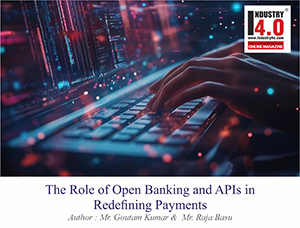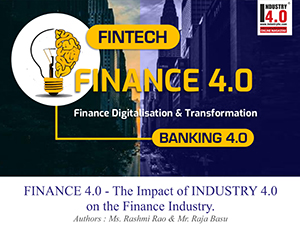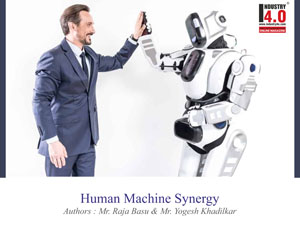Sustainability in Fashion by Democratizing Access Through Affordable Service Models
Thinking about how the fashion industry will progress in the future. Affordability plays as significant a role as creative innovation. To democratize fashion and make it accessible to everyone. It must cater to a broad spectrum of economic groups. Seems emphasizing service consumption over exclusivity. According to Price Elasticity of Demand says if a product is price-elastic, a decrease in price leads to a proportionally larger increase in the demand.
 At the same time income effect teaches us when prices drop. Generally, consumers have more purchasing power then. It enables them to buy more of the goods or services. Now the point is can we think fashion or garment industry from service point of view. To be more precise can we apply ‘pay as you go’ model here. So that consumers can pay for garment services based on their actual usage. And that will help them to have more variations in selection. There will be no initial cost, maintenance cost and storage cost. It sounds interesting right?
At the same time income effect teaches us when prices drop. Generally, consumers have more purchasing power then. It enables them to buy more of the goods or services. Now the point is can we think fashion or garment industry from service point of view. To be more precise can we apply ‘pay as you go’ model here. So that consumers can pay for garment services based on their actual usage. And that will help them to have more variations in selection. There will be no initial cost, maintenance cost and storage cost. It sounds interesting right?
Let us understand how we can make this a reality. As we know the principle that emphasizes the importance of increasing reach to make an industry popular aligns with the Network Effect. It also aligns with the concepts of Market Penetration. And accessibility in economics and business strategy principles apply for fashion industry the same way as well.
The network effect states that the value of service increases as more people use it. In the context of making an industry popular, expanding its reach ensures more widespread adoption. Which, in turn, enhances its attractiveness and perceived value.
Market penetration strategy focuses on increasing the accessibility of a service. This helps to gain a larger share of the market. An industry can grow its presence and popularity by targeting broader demographics, pricing competitively, and enhancing distribution.
Finally making a service widely available and affordable increases its reach and adoption. When barriers such as cost, or exclusivity are reduced, more people can engage. This is leading to greater popularity. In essence, a combination of these principles underscores that expanding reach. It is critical for making an industry widely recognized and popular through affordability, accessibility, and visibility.

A sustainable business model for fashion industry

While the global fashion industry is valued over USD1.7 trillion, at the same time it produces over 92 million tons of textile waste annually, which accounts for almost 7% of landfills globally. Additionally, more than 85% of materials (approx. one truckload every second) used end up either in incinerators or in landfill. The staggering numbers call for a shift in both the production and use of clothing in a more sustainable manner. Circular economy model and democratizing access through an affordable service model are some of the business models that has the potential to achieve this. ‘Rent the Runway’, ‘The RealReal’, ‘Fashionphile’, ‘Ann’s Fabulous Finds’ are some of the companies that have popularised these concepts of fashion rental and resale. The ‘Goodwill’ stores also exemplify this concept of resale proving the viability of these business models for the mass public.

1. Design and Production: Industry should promote to manufacture more sustainable and durable clothing using eco-friendly materials and production processes. Fast fashion creates more waste. The current trending slow fashion movement is in the desired direction providing more repeated over extended period.
2. Distribution: Technology plays a significant role in managing the stock and distribution network efficiently. Optimising distribution process will reduce the load on storage. Businesses can fully leverage e-commerce’s source-to-destination distribution models efficiently.
3. Use and Maintenance: When consumers become responsible for the repair and maintenance of the clothing, that promotes responsible usage. Following care instructions and repairing any damages prolongs the lifespan of the garments. “There is a 36% decline in the no of times a garment is used over the last 15 years”, says earth.org research. The lesser the use, the more the lifetime of the apparel.
4. Resale & Reuse: Consumers can resale or donate their clothing to extend its life cycle or can participate in apparel rental services. This not only extends the reuse of the apparel, but also creates revenue opportunity for the apparel owner, while curtailing the depletion of resources used in manufacturing.
5. Recycling and Upcycling: Clothing that is no longer wearable should be recycled into new textiles or upcycled into new products, such as accessories or home goods, reducing waste and emission. As per a 2018 study by Quantis, if no action is undertaken to reduce fast fashion waste, then the apparel industry’s global emissions will increase by 50% by 2030. Recycling and upcycling methods offer alternatives to reduce the emission by extending the end-of-life scenarios and promote responsible or smart consumption practices.
Digital Technology can play a key role in driving sustainability and consumer education in global fashion industry.
AI/ML and GenAI enabled technologies offer the capabilities to improve process efficiency across the product lifecycle by gleaning intelligence at every stage. This intelligence can be leveraged to automate processes, monitor and manage demand across geographies by reallocating resources efficiently. Walmart, Amazon or e-bay’s efficient use of technology in their e-commerce platforms offer valuable insights and resale opportunities. As UNEP quoted, “The world’s consumers are buying more clothes and wearing them for less time than ever before, discarding garments as fast as trends shift”. “It is estimated that people are buying 60 per cent more clothes and wearing them for half as long.” This calls for promoting awareness on smart consumption, where social media platforms can play a significant role.
Conclusion
The fashion industry’s journey toward sustainability is complex and ongoing. It requires a collaborative effort that reimagines every aspect of the fashion value chain—from the extraction of raw materials to the end of a garment’s life and hinges on the commitment of all stakeholders. While fast fashion and high end-designer apparels has a huge middle income consumer market to capitalise on, it’s the mass lower income group that needs to be educated and mobilised. Cost efficiency in the entire process is a key factor, where digital technology has a key role to play through automation and intelligent recommendations. Educating consumers on smart consumption habits such as clothing-as-a-service is another key element that promotes reuse and recycle, thus reducing environmental impact. However, democratizing this concept of clothing-as-a-service needs innovation in business model, efficient use of e-commerce platforms and focus on ethical practices with an industry-wide focus on driving sustainability. While the challenges are significant, the opportunities for innovation, ethical growth, and environmental stewardship are immense. It’s our responsibility to act responsibly and protect the planet.
About the Authors:
 Dr. Manas Panda Ph.D is a partner in a leading technology MNC advising banks and financial institutions implement their digital transformation strategies with focus on customer experience and operational efficiency. A Stanford LEAD alumnus, he talks about technology innovations in financial services. He is based in Toronto, Canada.
Dr. Manas Panda Ph.D is a partner in a leading technology MNC advising banks and financial institutions implement their digital transformation strategies with focus on customer experience and operational efficiency. A Stanford LEAD alumnus, he talks about technology innovations in financial services. He is based in Toronto, Canada.
With an analytical, attention to detail, & growth mindset, Dr. Manas Panda has designed and implemented multiple simultaneous programs and cross functional solutions, driving efficiency & experience for large global banks across continents.
Result oriented, Dr. Manas Panda thrives in solving problems and driving complex engagements.
Dr. Manas Panda builds perspectives on strategic opportunities by connecting the dots, tracks insights and manages communications with stake holders and leadership.
Dr. Manas Panda is highly committed and driven, resilient and optimistic at core.
Dr. Manas Panda is Bestowed with the following Licences & Certifications :
https://www.linkedin.com/in/ma
Dr. Manas Panda can be contacted at:
 Mr. Raja Basu is a Senior Consulting professional in a leading MNC.
Mr. Raja Basu is a Senior Consulting professional in a leading MNC.
Mr. Raja Basu works as a business architect and helps global banking and financial markets clients to enable their digital transformation journey.
Mr. Raja Basu has special interest in responsible use of AI and sustainability.
Mr. Raja Basu is also pursuing his doctoral studies (PhD) from XLRI Jamshedpur.
Mr. Raja Basu is based out of Kolkata, India.
Mr. Raja Basu is an experienced leader in both technology and business, he has a proven track record of defining and implementing technology-driven transformations for clients in the global banking and financial markets.
Mr. Raja Basu focus lies in automation, particularly artificial intelligence (AI), and its impact on climate and sustainability (SCR).
Mr. Raja Basu possess a deep understanding of value-driven advisory practices, which have played a significant role in building strong client relationships. Throughout his career, he has actively contributed to numerous transformation programs involving complex applications for international clients across the United States, Canada, Europe, and Singapore.
Mr. Raja Basu is Bestowed with the following Licenses & Certifications :
https://www.linkedin.com/in/ba
Mr. Raja Basu is Volunteering in the following International Associations & Institutions :
https://www.linkedin.com/in/ba
Mr. Raja Basu is Accorded with the following Honors & Awards :
https://www.linkedin.com/in/ba
Mr. Raja Basu can be contacted at :
Also read Mr. Raja Basu’s earlier article :

















